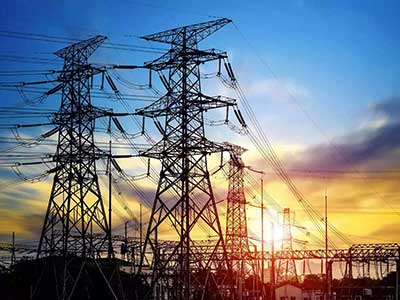Relevance: GS-3: Indian Economy and issues relating to planning, mobilization, of resources, growth, development and employment Inclusive growth and issues arising from it; Infrastructure: Energy
Key Phrases: Power outages, Power Ministry, Central Electricity Authority (CEA), state power distribution companies (discoms), Coal India Ltd (CIL), Former coal secretary Anil Swarup, Former coal secretary Anil Swarup
Why in News?
- With temperatures rising across many parts of the country with the onset of summer, leading to a rise in the demand for power.
- Recently, multiple instances of power outages have been reported in several states.
- Moreover, the Power Ministry too has raised concerns about the coal shortage in India.
Why is Coal a necessary evil for India?
- Coal is the most important and abundant fossil fuel in India. It accounts for 55% of the country’s energy needs. The country’s industrial heritage was built upon indigenous coal.
- The limited reserve potentiality of petroleum & natural gas, eco-conservation restriction on hydel projects and geo-political perception of nuclear power, coal will continue to occupy centre-stage of India’s energy scenario.
- Coal demand is driven by the rising population, expanding economy and a quest for improved quality of life.
- Currently, India doesn't have a feasible replacement of Coal Based Thermal Energy in near future.
What are the reasons highlighted in the Editorial for Coal demand-supply mismatches?
- Demand for power has soared:
- For instance, New Delhi’s peak power demand touched 5,460 megawatts (MW) recently, the highest ever in April’s first fortnight.
- The national capital’s peak power demand had not crossed this mark in either 2021 or in the previous year.
- Several states, including Andhra Pradesh, Madhya Pradesh, Punjab, Haryana, Telangana, and Maharashtra, are facing power outages.
- The coal stock with power generation companies (gencos) is not adequate to meet the rising demand.
- Lack of coal availability in stock:
- Normally, a power plant must maintain 26 days of coal stock.
- However, at present, several power plants are reporting critical levels of coal stock.
- Data from the Central Electricity Authority (CEA) shows that 97 power plants out of the 173 have critical levels of coal inventory.
- These have an average of 28% of the stock compared to the normal scenario.
- Poor logistic facilities and Covid-19 worsen the financial sheet:
- The lack of railway rakes to transport coal is also a major problem.
- The state power distribution companies (discoms) have also not been able to clear their dues to power generation companies.
- The covid-19 pandemic has now weakened the finances of many states, raising doubts about the ability of state-owned discoms to clear their dues.
- Other factors quoted for coal shortage:
- The stagnation of production by Coal India Ltd (CIL) after the bumper production in FY15 and FY16.
- In FY22, however, the production rose 4.4% to 622.6 million tonnes.
- Former coal secretary Anil Swarup has pointed to the tussle between the Centre and non-Bharatiya Janata Party coal-rich states, which can delay environment and land acquisition clearances.
- High dues of discoms towards gencos and the eventual delay in gencos paying CIL has complicated the scenario.
Do you know about the Coal Reserves in India?
- Coal deposits spread over 27 major coalfields, are mainly confined to eastern and south-central parts of the country.
- The Coal resources of India are available in older Gondwana Formations of peninsular India and younger tertiary formations of north-eastern region.
- The lignite reserves stand at a level around 36 billion tonnes, of which 90% occur in the southern State of Tamil Nadu.
- Top 5 States in terms of total coal reserves in India are: Jharkhand > Odisha > Chhattisgarh > West Bengal > Madhya Pradesh.
What are the steps taken by the Government?
- CIL has made efforts to raise supply to the power sector by reducing its dispatch to other industries.
- Recently, the power ministry said that to avoid long distance transport, ‘tolling’ facilities would be allowed.
- In this system, state gencos can allow other thermal power plants near a coal mine to utilize their coal linkages to generate and transmit power back. This is an easier alternative compared to transportation.
- Further, the states need to ensure that imported coal-based plants operate at reasonable tariffs.
- The Power Ministry is also trying to increase the supply of coal by expediting the start of production from a number of mines that already have all requisite clearances in place.
Conclusion:
- There is a need for increasing production and competition by leveraging higher producing mines to enable more world-scale operations.
- Government should revisit coal grades pricing mechanism from grades based on coal mined to grades based on coal desired for end use.
- With government’s efforts to push renewable energy due to international conventions on climate change, increase in carbon cess and other initiatives for lesser use of coal, there is a need for ‘Vision 2030 for the coal sector’, which takes into account the environmental factors such as reduction of carbon footprint, abatement of global warming, green thermal power plants.
Source: Live-Mint
Mains Question:
Q. Coal use is a necessary evil for the socio-economic development of India. Discuss. Also, highlight the various reasons associated with the Coal demand-supply mismatches and measures taken by the government to address them. (15 marks).









